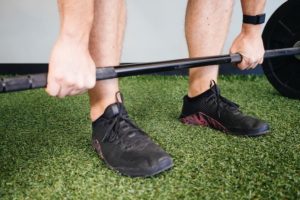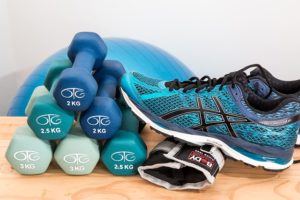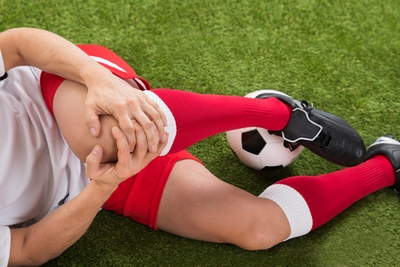Have you ever thought of how your knee works?
 Although your knee might look like a simple joint to you, you will be amazed once you know how special it is.
Although your knee might look like a simple joint to you, you will be amazed once you know how special it is.
Imagine two surfaces as shallow as the end of your femur (thigh bone) and the top of your tibia (leg shaft bone) joining together to form your knee joint.
Normally, when two shallow-end bones articulate with one another forming a joint, they can easily dislocate when you try to move the joint.
But unexpectedly, your knee joint is more stable and stronger than what you imagine.
It can also provide you with a great range of mobility as you bend your knee. [1]
So, how is that possible?
Your knee joint is strengthened and stabilised by a number of very strong ligaments, a joint capsule and the knee muscles. [1]
The Posterior cruciate ligament (PCL) is one of these strong ligaments that is located inside your knee.
It is designed to improve your knee’s stability and strength against strong blows that push your leg shaft backwards or your thigh forward.
In addition, it keeps both bones together when you bend your knee; in fact, it constitutes 90% of the resistance during knee flexion (bending). [2], [3]
Because this ligament is important in providing knee stability, it is important for an athlete – and even for non-athletes – to learn about PCL knee injury and PCL injury symptoms in order to successfully prevent it, avoid PCL tear knee, and detect PCL injury symptoms as soon as they occur.
PCL Injury: How it Occurs and What Are the Symptoms?
 Believe it or not, up to 37% of injuries include PCL injury and its PCL injuries occur in both athletes and non-athletes not only in London and the UK, but also in the whole world. [18]
Believe it or not, up to 37% of injuries include PCL injury and its PCL injuries occur in both athletes and non-athletes not only in London and the UK, but also in the whole world. [18]
Kinesiologists and sports injury specialists have been concerned about PCL injury and how different PCL injuries occur because it helps in injury prevention and treatment.
In fact, in 39.7% of knee ligaments injury in London and across the world, the PCL was injured in isolation of other ligaments. [19]
Moreover, a study included 3357 retired competitive Olympians from 131 different countries, including London and the UK, they reported injuries The knee, followed by the lumbar spine and then shoulder were the three most common injury locations.[21]
They also reported ligament rupture among the most frequent types of injury.[21]
Apparently, they reported three ways by which you can injure your PCL; Including:
Hyperflexion Injury
Hyperflexion stands for excessive knee bending of the knee; and hyperflexion injury to the PCL occurs when you fall on a bent knee either during sports or while simply going down stairs. [4]
Normally, when you bend your knee, the upper part of your tibia moves forward while your leg moves backward.
This leads to stretch on your PCL. [4,5]
If you fall on a bent knee, PCL may be overstretched, injured or torn. [5]
Dash Board Injury
One of the most common mechanisms of PCL knee injury is what happens when you receive a strong, sudden blow to your knee while sitting. [6]
Just like what happens if you are in car’s front seat and the car brakes suddenly in an accident. [6], [7]
With strong brakes, the front seat passengers may hit their leg against the dash board which can lead to injury, PCL tear knee or avulsion of the PCL.
This is why this mechanism of injury is referred to as the dash-board injury. [6], [7]
Hyperextension Injury
Hyperextension stands to excessive straightening of your knee joint.
It represents one of the PCL injuries occur when you are standing, and you receive a sudden blow to you’re the front of your knee. [8]
This sudden blow can lead to PCL injury or PCL tear knee and can also affect the integrity of the knee capsule. [8]
PCL Injuries in Athletes: Prevention and Return-to-Play Strategies
 If you are a sports person, especially one who participates in high-impact sports, PCL injury might be one of your worst nightmares.
If you are a sports person, especially one who participates in high-impact sports, PCL injury might be one of your worst nightmares.
But what if you learn the best and most effective hacks to prevent PCO injury?
And if you have had PCL injury, no worries, I have got your back.
And I will reveal to you the best rehabilitation hacks to go back on the track in no time.
Now that you understand how PCL injuries occur, understanding the Risk Factors for PCL Injuries in Athletes is your next step.
Risk Factors for PCL injury
Even though you might look as an in-shape, professional athletes, hidden risk factors can be putting you at risk for PCL injuries; including:
Neglected Previous Injuries
PCL is one of the most important ligaments of the knee.
However, there are other ligaments that also help in stabilising your knee and resisting bone dislocation such as the medial and lateral collateral ligaments (MCL and LCL). [9].[10]
Previous injuries to the knee, affection of these ligaments and inadequate rehabilitation might put additional load on your PCL and increase your risk of injury.
Muscle imbalance
While ligaments passively constitute an important part of your knee stability.
Muscles are actively responsible for giving you a stable knee.
If your muscles are weak, or you have muscle groups stronger than others, you may be more at risk for injuring your ligaments during sports. [11],[12]
Poor proprioception
Proprioception is a type of special sensation that helps you be aware of your body position and movement.
In sports, it is important to improve your proprioception in order to be capable of performing the right movements in the right time.
For example, if you have good proprioception, you can jump high and land on one foot in the right position to avoid ankle sprain, and also with your leg in the right position to avoid knee ligament injury. [13]
In other words, if you have poor proprioception, you are more at risk of PCL injury.
Learn more about proprioception deficit and find out if you are including enough proprioceptive training in your programme by consulting Jazz Alessi, number one knee injury rehab specialist in London.
Book A FREE CONSULTATION NOW!Foot arch abnormalities
Believe it or not, if you have a flat foot or an abnormal foot arch, you may be more at risk for PCL injury.
The reason behind that is, how your foot arches look like affect your knee kinetics and kinematics.
In other words, it affects your knee alignment, stability and also affects the muscles around the knee. [14]
So, if you feel like your foot arch is not right, consult a podiatrist for a proper insole [14] and if you do not need an insole and need to learn corrective exercises, consult a professional personal trainer for free.
Preventing Injury: Protect your PCL
You might think that PCL injury is not common in London and the UK.
But the truth it, PCL injuries constitute 3% of all knee ligament injuries in the general population and as high as 37% in an emergency department setting all over the world. [20]
After you have learnt what might be putting at more risk of PCL injury, it is time for the good news…
As a matter of fact, you can successfully prevent PCL injury and even if you have already had PCL injury, you can boost your recovery, avoid surgeries and prevent recurrency by following hacks:
Protective Wear
Wearing Proper Protective Gear to Reduce the Risk of PCL Injuries is one important thing that is usually overlooked by athletes.
 If you are participating in a high-impact sport and you are concerned about your PCL, you can consult your personal trainer to provide you with the proper protective wear to protect your knee.
If you are participating in a high-impact sport and you are concerned about your PCL, you can consult your personal trainer to provide you with the proper protective wear to protect your knee.
For example, knee cap, knee guard bandages and knee elastic braces.
These protective measures not only are important to prevent injury, but also can be used after injury to for immobilisation in order to allow for proper healing of the ligament. [15]
The protective wear you need depends on your goal, knee condition and the sport you are playing.
Consult Jazz Alessi, professional rehab personal trainer for elite athletes.
Book a free consultation NowDedicate More to Warm-Up
Insufficient warm-ups can be the reason why you are at higher risk for PCL knee injury. To protect your muscles, ligaments and tissues, make sure you properly and sufficiently warm up before you play your favourite sports.
Warming up and including Flexibility Exercises into Your Training Routine help you raise tissue temperature, increase blood supply and prevent tissue injury. [16]
Strengthen your Muscles
 No matter whether you have had previous PCL injuries or you are aiming to prevent them, working out the muscles around the knees is important to maintain good joint alignment and support the passive knee stabilisers (i.e., ligaments and capsule).
No matter whether you have had previous PCL injuries or you are aiming to prevent them, working out the muscles around the knees is important to maintain good joint alignment and support the passive knee stabilisers (i.e., ligaments and capsule).
In a customised manner.
Focus on strengthening your quadriceps muscles (front of the thigh), hamstrings (back of the thigh), calf muscles, adductors (inner thigh muscles), abductors (outer thigh muscles) in addition to your glutes that help maintain your thigh bone in good alignment with your leg bone. [15]
Put more effort into Balance and Proprioception training
If you are worried about your PCL health, adding more balance and proprioception exercises to your training plan structure will help you avoid injury.
Simply changing how you do exercises can make a huge difference.
For example, if you are doing quadriceps sets to strengthen your quads, try doing squats instead.
Although both exercises can target your quads effectively, bearing weight on your knees in exercises like lunges and squatting also improve your proprioception and balance. [13]
What to expect: PCL Injury Rehabilitation Programme in London, Near You
If you have had PCL injury, make sure you start your recovery journey at the right time and with the right rehabilitation plan to ensure stronger return to your favourite sport.
Simply put, there is no single PCL rehabilitation plan that works for all injuries.
In other words, if you have a grade I PCL injury, your rehabilitation plan will be totally different from grade II and III injuries.
Your professional personal trainer will tailor a laser-sharp customised programme to tackle your problems and help you recover faster while maintaining your athletic performance level.
In order to do that, your personal trainer will need to ask you about:
- How you were injured
- Your PCL injury symptoms
- Your doctor’s report
- The sport you participate in
- The problems you face after injury
- Your goals
Based on these information and more your personal trainer will set the proper plan for you in order to face the challenges and bring you back to your pre-injury level.
To do that, you need a proper nutrition plan that aims at boosting your recovery and providing your body with the nutrients, vitamins and proteins not only to heal the injured tissues, but also to prevent losing muscles.
In addition, you need to rest for the right amount to allow for tissue healing, then start exercising to restore your strength and prevent recurrence.
Sounds like a lot to do… right?
What if a professional rehab personal trainer is taking care of your rehab plan from A to Z and you know that you are in good hands?
This is how it is going to be with Jazz Alessi, request a free consultation now!
Who is Jazz Alessi?
 Jazz Alessi is an expert knee rehab personal trainer who works closely with elite and competing athletes to help them restore their performance and recover from PCL injuries.
Jazz Alessi is an expert knee rehab personal trainer who works closely with elite and competing athletes to help them restore their performance and recover from PCL injuries.
He goes the extra mile to design a personalised PCL Injuries in Athletes: Prevention and Return-to-Play Strategy that suits every individual’s knee condition, complaints and goals using evidence-based exercise approaches and up-to-date nutritional plans that are easy and enjoyable to transform into a lifestyle.
References
1- Amis, A & Gupte, Chinmay & Bull, Anthony & Edwards, A. (2006). Anatomy of the posterior cruciate ligament and the meniscofemoral ligaments. Knee Surg Sports Traumatol Arthrosc 14:257-263 (Review). Knee surgery, sports traumatology, arthroscopy : official journal of the ESSKA. 14. 257-63. 10.1007/s00167-005-0686-x.
https://www.researchgate.net/publication/7538573_Anatomy_of_the_posterior_cruciate_ligament
_and_the_meniscofemoral_ligaments_Knee_Surg_Sports_Traumatol_Arthrosc_14257-263_Review
2- Butler DL, Noyes FR, Grood ES (1980)Ligamentous restraints to anterior-pos-terior drawer in the human knee: abiomechanical study. J Bone Joint SurgAm 62:259–270
https://journals.lww.com/jbjsjournal/citation/1980/62020/ligamentous_restraints_to_anterior_posterior.13.aspx
3- Race A, Amis AA (1996) Loading of the two bundles of the posterior cruciateligament: an analysis of bundle functionin A–P drawer. J Biomech 29:873–879
https://pubmed.ncbi.nlm.nih.gov/8809617/
4- Boynton MD, Tietjens BR. Long-term followup of the untreatedisolated posterior cruciate ligament-deficient knee. Am J SportsMed 1996; 24: 306-1
https://pubmed.ncbi.nlm.nih.gov/8734880/
5- Cooper DE, Warren RF, Warner JJ. The posterior cruciate ligamentand posterolateral structures of the knee: anatomy, functionand patterns of injury. Instr Course Lect 1991; 40: 249-70
https://link.springer.com/article/10.2165/00007256-199928060-00005
6- Lee HG. Avulsion fracture of the tibial attachments of the crucialligaments, J Bone Joint Surg Am 1937: 19: 460-8
https://pubmed.ncbi.nlm.nih.gov/509810/
7- Abbot LC, Saunders JB, Bost FC. Injuries to the ligaments ofthe knee joint. J Bone Joint Surg Am 1944; 26: 503-21
https://www.semanticscholar.org/paper/INJURIES-TO-THE-LIGAMENTS-OF-THE-KNEE-JOINT-Abbott-Saunders/13b94ba04f0c6d5eefbb9a6a506d15211b649d7e
8- Kannus P, Bergfeld J, Jarvinen M, et al. Injuries to the posteriorcruciate ligament of the knee. Sports Med 1991; 12: 110-31
https://pubmed.ncbi.nlm.nih.gov/1947532/
9- Kim YM, Lee CA, Matava MJ. Clinical results of arthroscopic single-bundle transtibial posterior cruciate ligament reconstruction: a systematic review. Am J Sports Med. 2011 Feb;39(2):425-34. doi: 10.1177/0363546510374452. Epub 2010 Aug 11. Review. PubMed PMID: 20702860.
https://pubmed.ncbi.nlm.nih.gov/20702860/
10- Fanelli GC, Edson CJ. Posterior cruciate ligament injuries in trauma patients: Part II. Arthroscopy. 1995 Oct;11(5):526-9. PubMed PMID: 8534292.
https://pubmed.ncbi.nlm.nih.gov/8534292/
11- Schipplein OD, Andriacchi TP. Interaction between active and passive knee stabilizers during level walking. J Orthop Res. 1991 Jan;9(1):113-9. doi: 10.1002/jor.1100090114. PMID: 1984041
https://pubmed.ncbi.nlm.nih.gov/1984041/
12- Peccin MS, Almeida GJ, Amaro J, Cohen M, Soares BG, Atallah AN. Interventions for treating posterior cruciate ligament injuries of the knee in adults. Cochrane Database Syst Rev. 2005 Apr 18;(2):CD002939. doi: 10.1002/14651858.CD002939.pub2. Update in: Cochrane Database Syst Rev. 2012;3:CD002939. PMID: 15846644.
https://pubmed.ncbi.nlm.nih.gov/15846644/
13- Benoit, Daniel & Caraffa, A & Ponteggia, F. (2001). Proprioceptive Training and Prevention of Anterior Cruciate Ligament Injuries in Soccer. The Journal of orthopaedic and sports physical therapy. 31. 655-60; discussion 661. 10.2519/jospt.2001.31.11.655.
https://www.researchgate.net/publication/11635837_Proprioceptive_Training_and_Prevention_of_
Anterior_Cruciate_Ligament_Injuries_in_Soccer
14- Yue, Yanxian & Lam, Gilbert W.K. & Jiang, Liang & Liu, Zuoliang & Ma, Ruiya & Zheng, Yi. (2022). The effect of arch-support insole on knee kinematics and kinetics during a stop-jump maneuver. Prosthetics & Orthotics International. Publish Ahead of Print. 10.1097/PXR.0000000000000103. https://www.researchgate.net/publication/359408261_The_effect_of_arch-support_insole_on_knee_kinematics_and_kinetics_during_a_stop-jump_maneuver
15- Wang D, Graziano J, Williams RJ 3rd, Jones KJ. Nonoperative Treatment of PCL Injuries: Goals of Rehabilitation and the Natural History of Conservative Care. Curr Rev Musculoskelet Med. 2018 Jun;11(2):290-297. doi: 10.1007/s12178-018-9487-y. PMID: 29721691; PMCID: PMC5970122.
https://www.ncbi.nlm.nih.gov/pmc/articles/PMC5970122/
16- Knudson, Duane. (2013). Warm-up and flexibility. 10.4324/9781315438450-11. https://www.researchgate.net/publication/240184136_Warm-up_and_flexibility
17- Butler DL, Noyes FR, Grood ES (1980) Ligamentous restraints to anterior-posterior drawer in the human knee: a biomechanical study. J Bone Joint SurgAm 62:259–270Butler DL, Noyes FR, Grood ES (1980)Ligamentous restraints to anterior-pos-terior drawer in the human knee: abiomechanical study. J Bone Joint SurgAm 62:259–270
https://pubmed.ncbi.nlm.nih.gov/7358757/
18- Janousek, Andreas & Jones, Deryk & Clatworthy, Mark & Higgins, Laurence & Fu, Freddie. (2000). Posterior Cruciate Ligament Injuries of the Knee Joint. Sports medicine (Auckland, N.Z.). 28. 429-41. 10.2165/00007256-199928060-00005.
https://www.researchgate.net/publication/12690277_Posterior_Cruciate_Ligament_Injuries_of_the_Knee_Joint
19- Longo UG, Viganò M, Candela V, de Girolamo L, Cella E, Thiebat G, Salvatore G, Ciccozzi M, Denaro V. Epidemiology of Posterior Cruciate Ligament Reconstructions in Italy: A 15-Year Study. J Clin Med. 2021 Feb 1;10(3):499. doi: 10.3390/jcm10030499. PMID: 33535403; PMCID: PMC7867089.
https://www.ncbi.nlm.nih.gov/pmc/articles/PMC7867089/
20- Harner CD, Höher J. Evaluation and treatment of posterior cruciate ligament injuries. Am J Sports Med. 1998 May-Jun;26(3):471-82. doi: 10.1177/03635465980260032301. PMID: 9617416.
https://pubmed.ncbi.nlm.nih.gov/9617416/
21- Palmer D, Cooper DJ, Emery C, et alSelf-reported sports injuries and later-life health status in 3357 retired Olympians from 131 countries: a cross-sectional survey among those competing in the games between London 1948 and PyeongChang 2018British Journal of Sports Medicine 2021;55:46-53.
https://bjsm.bmj.com/content/55/1/46



